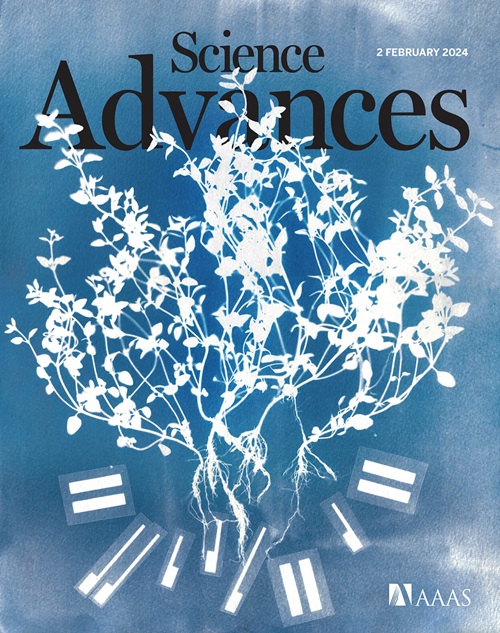通过形态控制保持纳米催化剂的表面应变
IF 11.7
1区 综合性期刊
Q1 MULTIDISCIPLINARY SCIENCES
引用次数: 0
摘要
工程应变会严重影响材料的特性,在半导体和量子系统中有着广泛的应用。然而,应变工程纳米催化剂的应用面临着挑战,尤其是在反应条件下保持高度应变的纳米晶体。在这里,我们引入了一种形态依赖效应,即使在苛刻的反应条件下也能稳定表面应变。通过使用四维扫描透射电子显微镜(4D-STEM),我们发现与边缘圆滑的形态相比,边缘锋利的立方体形核壳 Au@Pd 纳米粒子能维持临界厚度更大的相干异位界面。分子动力学模拟表明,由于边角的剪应力减小,这种构型可抑制位错成核。通过苏子型交叉偶联反应发现,由于表面应变的稳定性增强,我们的方法比传统纳米催化剂的活性提高了四倍。这些发现有助于推动先进纳米催化剂的发展,并预示着应变工程在各个领域的更广泛应用。本文章由计算机程序翻译,如有差异,请以英文原文为准。

Preserving surface strain in nanocatalysts via morphology control
Engineering strain critically affects the properties of materials and has extensive applications in semiconductors and quantum systems. However, the deployment of strain-engineered nanocatalysts faces challenges, in particular in maintaining highly strained nanocrystals under reaction conditions. Here, we introduce a morphology-dependent effect that stabilizes surface strain even under harsh reaction conditions. Using four-dimensional scanning transmission electron microscopy (4D-STEM), we found that cube-shaped core-shell Au@Pd nanoparticles with sharp-edged morphologies sustain coherent heteroepitaxial interfaces with larger critical thicknesses than morphologies with rounded edges. This configuration inhibits dislocation nucleation due to reduced shear stress at corners, as indicated by molecular dynamics simulations. A Suzuki-type cross-coupling reaction shows that our approach achieves a fourfold increase in activity over conventional nanocatalysts, owing to the enhanced stability of surface strain. These findings contribute to advancing the development of advanced nanocatalysts and indicate broader applications for strain engineering in various fields.
求助全文
通过发布文献求助,成功后即可免费获取论文全文。
去求助
来源期刊

Science Advances
综合性期刊-综合性期刊
CiteScore
21.40
自引率
1.50%
发文量
1937
审稿时长
29 weeks
期刊介绍:
Science Advances, an open-access journal by AAAS, publishes impactful research in diverse scientific areas. It aims for fair, fast, and expert peer review, providing freely accessible research to readers. Led by distinguished scientists, the journal supports AAAS's mission by extending Science magazine's capacity to identify and promote significant advances. Evolving digital publishing technologies play a crucial role in advancing AAAS's global mission for science communication and benefitting humankind.
 求助内容:
求助内容: 应助结果提醒方式:
应助结果提醒方式:


